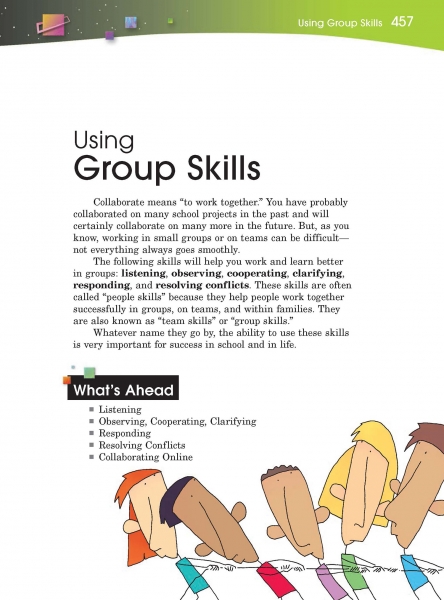Page 457 from

Start-Up Activity
Use the following activity to reinforce good listening skills and help students prepare to work in groups, :
Separate students into small groups (three to five people). Have each team member privately list two things that actually happened to him or her, and one thing that didn’t. Then each person should read her or his list aloud in random order, and the other members should try to identify the event that is made up.
As a class, discuss how successful students were at guessing the fictitious events. Ask students what clues helped them make their choices (body language, tone of voice, likely motivation, and so on).
Think About It
“Cooperating means ‘working together’—using common sense and common courtesy to reach a common goal.”
—Dave Kemper

Start-Up Activity
Use the following activity to reinforce good listening skills and help students prepare to work in groups, :
Separate students into small groups (three to five people). Have each team member privately list two things that actually happened to him or her, and one thing that didn’t. Then each person should read her or his list aloud in random order, and the other members should try to identify the event that is made up.
As a class, discuss how successful students were at guessing the fictitious events. Ask students what clues helped them make their choices (body language, tone of voice, likely motivation, and so on).
Think About It
“Cooperating means ‘working together’—using common sense and common courtesy to reach a common goal.”
—Dave Kemper



